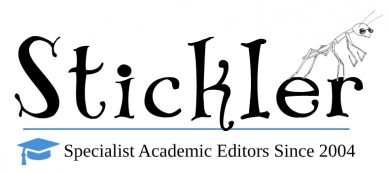Whenever the American Psychological Association (APA) introduces a new edition of its publication manual, the new version usually includes several important changes to the style standards. This post covers some of the most significant updates introduced in the 7th edition of the APA style guide.
Referencing Standards
Changes to citation style in APA 7 mainly relate to simplifying citations and making online sources easier to cite. The main changes are as follows:
Publisher locations should no longer be included in the reference list for book entries.
Previously, references to books had to include both the publisher location and publisher name (e.g., “Washington, DC: American Psychological Association”). Now, only the publisher name should be included (e.g., “American Psychological Association”). For references where the publisher and author are the same, the publisher name is simply omitted from the citation.
DOIs and URLs are now presented differently.
Both are now included as hyperlinks in references and DOIs no longer need to be preceded by the label “DOI.” The label “Retrieved from” is now only used before URLs when a retrieval date is necessary—otherwise, the URL follows the period after the page title or page name (e.g., Howe, J. (2006, June 1). The rise of crowdsourcing. Wired. https://www.wired.com/2006/06/crowds).
Use of “et al.” has changed.
Previously, APA stipulated that in-text citations for up to five authors should include all author surnames, with “et al.” used in subsequent citations of the same work. In APA 7, “et al.” is used for all instances of citations with three or more authors, even at first mention.
In the reference list, if a source has 20 or fewer authors the surnames and initials of all of these authors should be included in the full reference. For sources with 21 or more authors, the first 19 authors should be listed, followed by an ellipsis, and then the final author’s surname and initial(s) (e.g. “Wiskunde, B., Arslan, M., Fischer, P., Nowak, L., Van den Berg, O., Coetzee, L., Juárez, U., Riyaziyyat, E., Wang, C., Zhang, I., Li, P., Yang, R., Kumar, B., Xu, A., Martinez, R., McIntosh, V., Ibáñez, L. M., Mäkinen, G., Virtanen, E., . . . Kovács, A. (2019). Indie pop rocks mathematics: Twenty One Pilots, Nicolas Bourbaki, and the empty set. Journal of Improbable Mathematics, 27(1), 1935–1968. https://doi.org/10.0000/3mp7y-537”).
Inclusive and Bias-Free Language
APA 7 provides new guidelines regarding writing in a way that is inclusive and respectful of all people, regardless of gender, age, sexual orientation, disability, and racial and ethnic identity. For example, the APA now endorses the singular “they,” which is a gender-neutral pronoun (e.g., “A writer’s career might be influenced by how much they read,” rather than “…how much he or she reads,” “how much he reads,” etc.).
APA 7 also recommends sensitivity when applying labels and using descriptive phrases or adjectival forms over adjectives as labels. For example, the 7th edition endorses using the phrase “people living in poverty” instead of “the poor” (American Psychological Association, 2020, p. 133). If you are interested in learning more, chapter 5 of the APA 7th edition provides extensive examples of and recommendations for using inclusive and bias-free language.
For more details on the above changes, or to read about all changes, you can check out this handy document published by the APA. And if you are feeling overwhelmed by trying to keep track of these new standards, our editors can help. We our experts in applying whichever version of APA (or other style) is required by your school or journal, so you can spend time writing and leave the style points to us.
Work Cited and Consulted:
American Psychological Association. (2020). Publication manual of the American Psychological Association (7th ed.).

